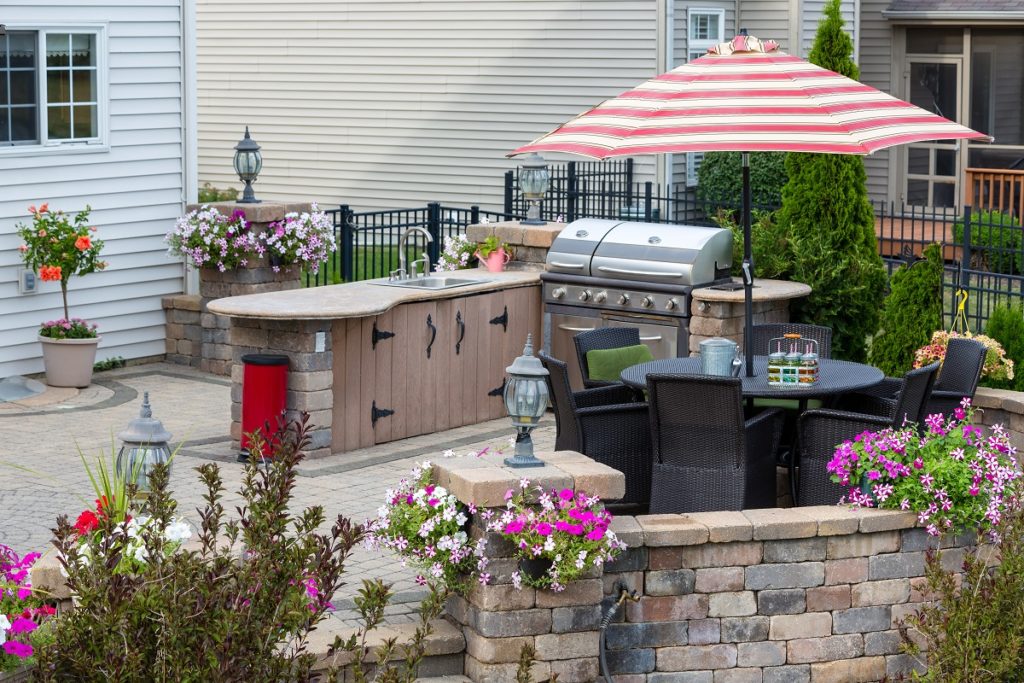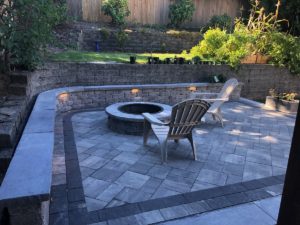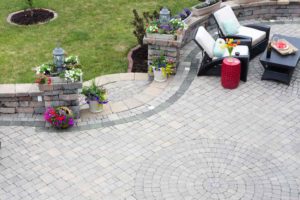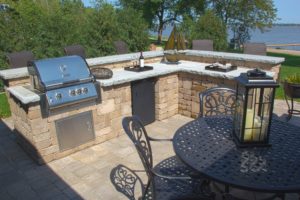
Summer is on the way, and no doubt you are looking forward to spending some relaxing time outdoors with friends and family.
Perhaps you imagine impressing guests with your culinary skills while they relax around the pool. Or maybe you’re just looking for an outdoor spot to grill some food surrounded by your family.
Whatever your reason, before you rush out and buy appliances, there are some things you want to consider when adding an outdoor kitchen to your home
5 Important Factors To Consider Before Building An Outdoor Kitchen
Budget
Before you even get off the ground, determine how much you can spend. Do your research on the costs of an outdoor kitchen and be realistic about what your budget will allow.
The larger the kitchen, the higher the cost. And the materials you choose to build the kitchen with can significantly influence the price.
Outdoor kitchens can range from a basic portable setup on your existing patio to a high-end design that includes illuminated walkways, outdoor entertainment, and built-in appliances.
Whatever you budget for, leave yourself a little wiggle room. Renovations and buildings inevitably include some unforeseen costs.
Location
There are no rules about where you have to place your kitchen in your yard. But it makes sense to be practical for several reasons.
You do not want to be carrying heavy pots or platters for long distances. Proximity to the house makes it easier to carry food out to the preparation area, plus easier cleaning when you are done entertaining.
Take note of ventilation, so smoke from the grill does not blow into the house.
Safety is an essential factor when considering where to place your outdoor kitchen. Do not place your grill close to where children are playing or where there is a lot of activity.
Lastly, if one of the reasons for an outdoor living space is to enjoy your fabulous view, you don’t want your outdoor kitchen blocking it.
Kitchen Layout
It can be easy to overlook the importance of a layout when four walls do not confine a kitchen. But you don’t want to end up with an impractical set-up that is uninspiring to use.
While an open space layout can be more versatile, you want the kitchen to complement your garden. Consider the space you have and what kitchen layout will suit the landscape and your lifestyle.
Don’t let the size of your outdoor kitchen overwhelm your existing outdoor space or look like an afterthought because it is tiny and poorly positioned.
Cabinetry comes in a variety of styles, colors, and finishes. A designer can advise you on the durability of different materials and how to fit your appliances practically into the design. Plus, having an expert will advise you on what works and what doesn’t.
Materials
When choosing materials, consider which materials will complement your home. Using materials that clash with existing finishes will make your outdoor entertainment area look poorly planned.
High-quality materials that are built to last, like pavers, are a no-brainer for an outdoor kitchen. Replacing low-grade weather-beaten material will cost you more in the long run.
You can use several different materials for the structure of the kitchen and countertops. Base your choice on the weather that your outdoor kitchen needs to withstand.
In areas of high wind, extreme heat, heavy rain, or snowstorms, concrete, natural stone, and tile will be the most durable.
Remember that your appliances will also be exposed to these elements, so quality counts!
Permits
Before you get going, check with your local authorities what permits are required to undertake renovation in your home.
It is a surprise to many that permits are required for anything but the most simple renovation.
As a general guide, we have added a few points below, but the exact requirements vary depending on the city or state in which you live.
- Structural: any change to load-bearing walls or addition of exterior windows, doors, and skylights.
- Plumbing: adaptations to sewer lines, adding sinks, installing new outdoor faucets.
- Electrical: making adaptations to existing electrical wiring or installing new electrical wiring.
- Cost: some cities require permits for any project over a certain amount even if none of the above are affected.
Conclusion
It’s never the wrong time to start planning your outdoor kitchen, but as warmer weather approaches, you may want to make the most of your outdoor space during the summer months.
If you have a simple low-budget design in mind, you may be able to DIY. But for more elaborate designs with added features, it is wisest to consult a professional designer.
Why not overhaul your backyard while you build your outdoor kitchen. An outdoor kitchen increases the resale value of a home, plus giving your yard a simultaneous facelift will boost the value even more.
Working with an experienced contractor will get you the results you want and take the stress and frustration out of tackling a potentially tricky project on your own.





